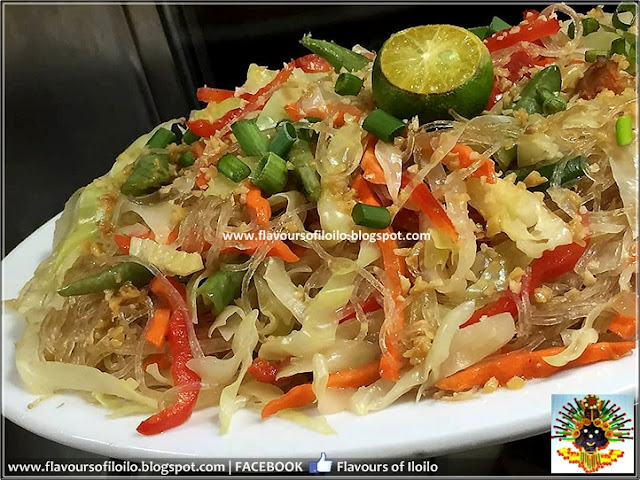Sotanghon is one of my favorite noodles to cook with, whether it's a soup or just a dry noodle dish. I like the texture of the noodles as well as its ability to absorb much of the flavor.
While there are so many brands - local and imported, I am very partial with the Marca Pato brand here in Iloilo as it "soft and fluffy" - I don't know if these are the right words, when cooked. Nonetheless, any dish with this brand is just deliciously good.
Here's a basic recipe for a Sotanghon Guisado where you can tweak using more or less ingredients of your choice.
Ingredients
- 1 pack Sotanghon, 500 grams
- 1 cup of pork slices or shredded chicken
- 1 cup carrot strips
- 1 medium cabbage, chopped
- 1 medium onion, chopped
- 3 cloves garlic, chopped
- Oil
- Salt
- Pepper
- 2 Tbsp Soy Sauce
- 2-3 cups Pork/Chicken stock or water with 2-3 pieces of bouillon cubes
- Sesame Oil, optional
- Calamansi
- In a large heated wok, place cooking oil and when hot enough saute garlic and onion.
- Add pork or chicken and saute for 2-3 minutes
- Pour in soup stock or water with broth cubes. Season with salt and pepper if needed. Let it boil and continue to cook for around 5 minutes.
- Place the drained sotanghon noodles and let it absorb the broth by tossing gently. Add water if necessary. Adjust flavour by adding more soy sauce and other seasoning.
- Finally, add carrots and cabbage.
- When noodles and vegetables are cooked, remove from heat drizzle with sesame oil.
- Serve with calamansi.

